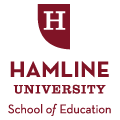Term
Summer 2017
Capstone
Capstone Project
Degree Name
MAED: NSEE
Facilitator(s)
Maggie Struck
Content Expert
Patty Born Selly, Bryan Wood
Abstract
Anishinaabe youth have historically experienced difficulty adjusting to mainstream education. Their graduation rates are the lowest in the country (Camera, 2015). By developing curriculum that is culturally relevant and rebuilds connections to the land educators can work towards closing the education gap. The curriculum in this capstone project uses the Lake Superior Watershed, environmental education practices, and American Indian Learner Outcomes to meet state standards. By using culturally relevant materials to connect to Anishinaabe youth it is expected that they will feel invested in the curriculum. They will build stronger community ties which in turn results in stewardship. The curriculum is organized as a kit which includes lesson plans, lesson materials, and supplemental literature. The kit provides four units, one for each season of the year, with four lessons in each unit. The lessons developed within are recommended for early education, grades 1-3.
Project Type
Curriculum
Keywords
At-risk Students, Curriculum, Environmental Studies, Science
Recommended Citation
Ojibway, Heidi Lynn, "How Can We Use The Lake Superior Watershed To Connect To Anishinaabe Youth And Inspire Them To Continue As Stewards Of The Land?" (2017). School of Education and Leadership Student Capstone Projects. 47.
https://digitalcommons.hamline.edu/hse_cp/47
dc_type
text
dc_publisher
DigitalCommons@Hamline
dc_format
application/pdf
dc_source
School of Education Student Capstone Theses and Dissertations

